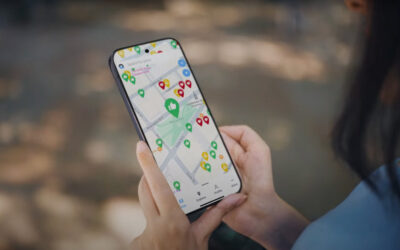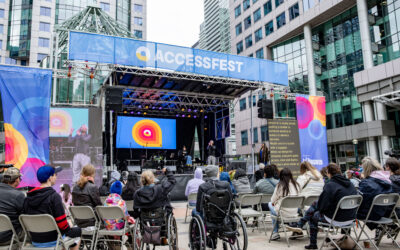What is Indigenous Disability Awareness Month?
November is Indigenous Disability Awareness Month (IDAM). Created in 2015 by the British Columbia Aboriginal Network on Disability Society (BCANDS), November is a time to recognize the valuable social, economic, and cultural contributions that Indigenous people living with disabilities bring to our society. Not only is it an opportunity to educate and raise awareness to the barriers faced by the community – IDAM also gives us a chance to loudly celebrate the meaningful achievements and contributions of Indigenous people living with disabilities.
Honouring This Month and Why it Matters
When talking about IDAM, it is crucial to remember the history of Indigenous people in Canada. Years of colonialism, racism, ableism, and forced poverty has resulted in higher rates of environmental and trauma-related disabilities (Chan, 2025). First Nations are more likely to have a disability than non-Indigenous Canadians. Over 30% of Indigenous Canadians aged 15 and older experience disability, a significantly higher rate than the national average of 22% for all disabled Canadians aged 15 and older (Stats Canada, 2022). Ongoing colonial policies, the lasting impact of residential schools, limited access to traditional healing practices, and many other systemic barriers is why these numbers remain so high — and why Indigenous-led approaches to accessibility and disability justice are essential.
IDAM continues to remind us all that disability still impacts Indigenous communities differently – and it requires us to deepen our understanding about colonial practices and barriers to care. Learning about the realities of Indigenous peoples with disabilities while also celebrating their work is part of our ongoing commitment to honouring IDAM.
Here are a list of Indigenous-led organizations, support services, and creative leaders having conversations about disability, culture, and community wellbeing:
1. Organizations and supports
- Visit the British Columbia Aboriginal Network on Disability Society (BCANDS) to learn more about Indigenous Disability Awareness Month
- Aboriginal Health Access Centres
- Hope for Wellness Helpline, Toll-Free at 1-855-242-3310
- Find a Friendship Centre near you
- Shkaabe Mkawa at CAMH, first Indigenous-led hospital centre based in Canada
- Indigenous Mental Health Awareness Resources, listed by Niagara College
- First Nations Accessibility Hub
2. Media content, articles, and educational tools
- Stream free content featuring talented Indigenous members of the disability community now on AMI+, including Postcards From, Mind Your Own Business, and Game Changers
- Youtube Video: Indigeneity and Disability in our Schools
- Crushing Colonialism – Inclusive international Indigenous reporting and storytelling
3. Indigenous representation in arts and media
- James Jones – Indigenous Hoop Dancer, Educator and Performer
- Mattmac – Music Producer, Recording Artist
- Kairyn Potts – Actor and Host
- Larissa Crawford – Entrepreneur, Speaker, Founder
- Michelle Chubb – Activist, Model, Public Speaker
- Autumn Peltier – Indigenous Rights Activist, Speaker
These resources are simply a starting point. Continuing to learn from the voices of Indigenous peoples with disabilities, challenge unfair systems, and uplift Indigenous-led approaches to disability and accessibility is how we can honour IDAM in a meaningful way.
Latest on the blog
AccessNow: Harnessing AI to Power the Future of Accessibility
In partnership with Google, AccessNow is unlocking new ways to deliver smarter accessibility insights with AI.When AccessNow first launched in 2015, our vision was bold: to answer every access inquiry, for every place on earth. It was a dream born from lived...
AccessFest 2025: A Windswept Welcome and a Festival That Felt Like Home
Written by Simran Bhinder.When I boarded my early morning flight from Winnipeg to Toronto, I expected sunshine and spring air. What I got instead were gusty winds and shivers – but none of that mattered. I wasn’t just attending an event. I was stepping into a...
Disability Pride and the Movement for Access
What Is Disability Pride?Disability Pride Month, recognized every July, is a time to celebrate the strength, resilience, and diversity of the disability community. It challenges stigma and highlights disability as a meaningful part of identity, culture, and lived...




